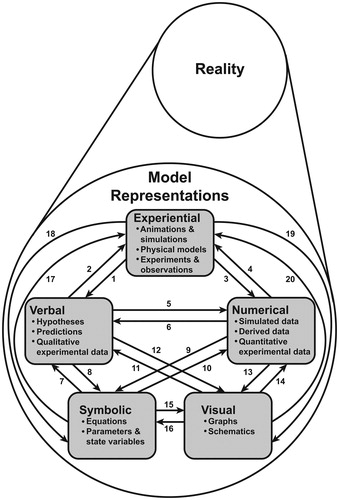Figures & data
Figure 1. Depiction of the blind men and the elephant parable, which illustrates the relationship between reality (the small circle) and different types of model representations (the large circle) [Citation48], discussed fully in Section 3.1. Elephant images used in this illustration are Creative Commons public domain from Pixabay.com.
![Figure 1. Depiction of the blind men and the elephant parable, which illustrates the relationship between reality (the small circle) and different types of model representations (the large circle) [Citation48], discussed fully in Section 3.1. Elephant images used in this illustration are Creative Commons public domain from Pixabay.com.](/cms/asset/06cedcc7-c051-4878-b7cc-fc2ebccdc7fd/upri_a_1489318_f0001_c.jpg)
Figure 2. “Rule-of-five” framework for models and modeling. Each box is a model representation (defined in ). Each arrow is an activity in the modeling process (defined in ).

Table 1. The five types of model representations, corresponding to with their definitions and classroom examples
Table A1. Modeling activities that correspond to the arrows in with a description and an example.
